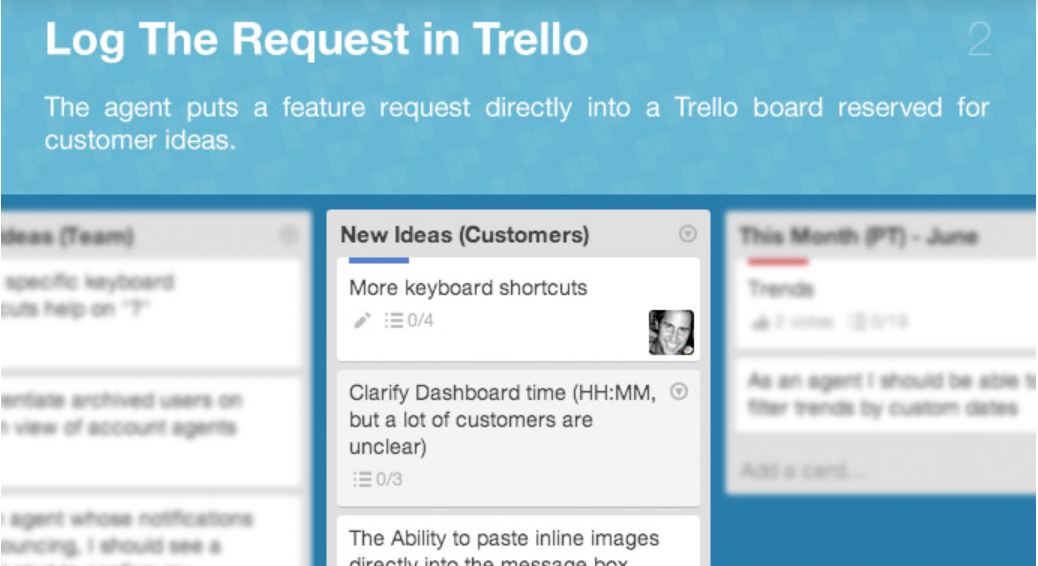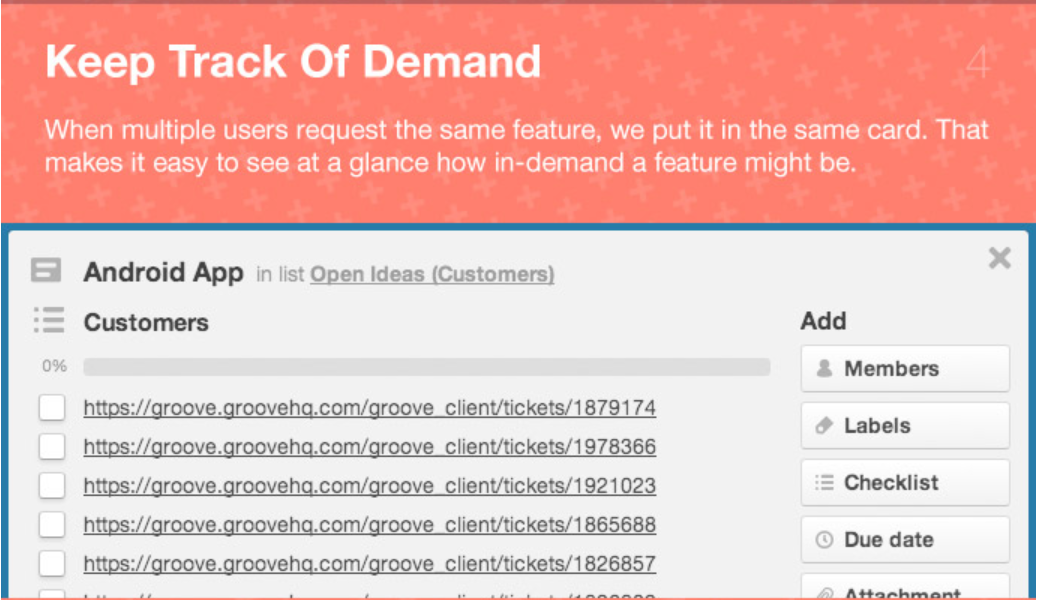Complaints happen in business. You can’t please everyone, and the saying “if you can’t take the heat, get out of the kitchen” is as applicable to entrepreneurs as it is to chefs.
So while getting negative feedback rarely feels good, I want to encourage you to view feedback the way I do: as a priceless opportunity to improve and grow your business.
Why I Love Getting Complaints
I’ve always said that it’s a good thing when people complain about your product or service, because you get more value from negative feedback than you do from the good things people are saying about you.
I’m not the only one who thinks this way. Bill Gates famously said:
“Success is a lousy teacher. It seduces smart people into thinking they can’t lose.”
Complaints and criticisms give you important signals. When you hear the same feedback over and over again, that’s a sign you need to make changes or else risk losing business from frustrated customers.
This kind of feedback is especially important if your business is young. Very few entrepreneurs start out with a perfect business model. Chances are you’re going to have to evolve based on what your customers need. Complaints show you which direction to go if you want your business to be sustainable.
How to Get Customer Feedback
Most businesses receive customer feedback in one of two ways: either it’s shared proactively by customers, or it’s solicited through surveys and other feedback mechanisms. To get a full understanding of your customers’ challenges with your product or service, you’ll need to address both.
Proactively Shared Feedback
Often, your most frustrated customers are going to come directly to you with their problems. All you need is a mechanism for capturing them – especially if you aren’t the person who’s fielding the complaints. If you have a customer service representative or team handling client care on your behalf, you’ll need to work closely with them to develop a process for tracking feedback.
That might mean:
- Creating a spreadsheet where they can write down the issues they’re hearing from customers (complaint tracking in its simplest form)
- Adding a field to your CRM system for issue tracking (if your CRM doesn’t offer a service or ticketing module)
- Installing a full-fledged ticketing system with analytics capabilities for reporting both quantitatively and qualitatively on customer issues
An example on the Groove blog shows how Trello can be repurposed to act as a repository for incoming customer requests:

However, your customers may also be actively sharing their complaints outside your company. For this reason, any feedback monitoring process has to also look at:
- Reviews left on your company’s properties (including your directory listings and social profiles)
- Reviews left on external websites (such as G2Crowd or Capterra, if you own a SaaS company)
- Informal feedback shared on Q&A sites like Quora or on industry-specific forums like StackExchange
Google Alerts for your company’s name and other branded keywords can help bring this feedback to your attention, though fully capturing external complaints will likely still require some manual effort on your part.
Learn More:
Solicited Feedback
You’ll hear both the good and the bad from your customers, but you can also get a lot of worthwhile feedback from people who haven’t purchased from you yet. That can still help you refine your product or service.
But if you’re going to turn the feedback that you capture into action – which I’ll discuss more in the next section – you must first be able to tap into the thoughts of your broader audience. A few of my favorite resources for capturing feedback are:
- Net promoter score (NPS) surveys, which ask customers to rate you on a scale of 0-10. Simple ratings like these can be captured with survey tools like AskNicely or SurveyMonkey.
- Qualaroo, for surveying people while they’re on a given website page. I often ask, “What else would you improve on this page?” or “What else would you like to see?” Asking these questions gets me plenty of insight into how I can make pages better, based on what people are telling me they want to see.
- SurveyMonkey or Typeform are great choices with some built-in analytics capabilities if you want current customers to give you more in-depth information. You may need to compensate people for their time or incentivize their participation in some other way, but really digging into your product or service with a customer will give you the kind of information no analytics can provide.
Also, don’t think of this as a one-time deal. I’ll send customers an NPS score every quarter or so, which helps me to identify either upward or downward trends in customer sentiment that I might need to address.
What to Do with Your Customer Feedback
Let’s start with what you shouldn’t do when you get a complaint.
No matter how upset a customer is, don’t run out and promise that you’ll solve the issue and make everything perfect for them. Should you apologize? Of course. Should you do everything you can within the product or service you have to make it right for them? Of course!
But overreacting to every piece of feedback you receive sets a dangerous precedent. What if the customer who’s upset wasn’t really your target buyer in the first place? What if the features required to make them happy would be cost-prohibitive to develop (or would take your company away from your value proposition)?
The gray area here is why you need a defined process for evaluating the complaints you receive and determining which actions you’ll take in response. Here are a few questions to ask as you build out your process:
How many people are complaining about a given issue?
Have you only ever received a single complaint about a particular aspect of your product or service? If so, that’s a very different situation than one that affects multiple customers (or even a percentage of your customer base), which is why you’ll want to keep tabs on how often specific issues are raised.
The Groove example shared earlier also includes a method for tracking the frequency of individual requests:

Are the right people complaining about a given issue?
I hinted at this above, but you need to consider where complaints are coming from when you decide how to move forward.
Let me give you an example. Outside of Single Grain, I own Clickflow, an A/B testing tool for SEO. On our “Features” page, we explicitly state that our product is for “Sites that get at least 25,000 visits from Google organic traffic per month (SEO traffic)”:

So if I start getting complaints that my tool isn’t working for customers with significantly less traffic volume, it’s not that I’m going to ignore them. But I may decide to focus first on change requests and complaints that are coming from customers who fall within that target market.
Learn More:
How serious are their complaints?
Listen to the language that people are using when they give you feedback. Are they saying, “Hey, it’d be cool if your product or service did X?” Or is their language more intense, like, “How is it possible that your product or service doesn’t do X??”
Sometimes, customers give you feedback because they want you to take their suggestions into consideration for the future. Other times, it’s that they’re so fed up with an underperformance issue that they’re thinking about taking their business elsewhere.
When deciding how to move forward, you’ll need to assess the seriousness of their feedback, as well as the likelihood that it’ll lead to future consequences, such as cancelling subscriptions, requesting refunds or leaving negative reviews about your brand online.
What’s the impact of their complaints?
Thomas Peham, writing for the Usersnap blog, suggests that you consider the financial impact of resolving complaints when deciding which fixes to prioritize. “One way to evaluate the importance of a bug fix or feature request is by looking at the value your implementation is causing,” he writes. “A bug causing a dead footer link might not be as valuable as a bug affecting the user’s payment.”
Do you have angry customers? That’s hard for a lot of people to deal with, but if you also have angry customers who can’t pay you, it’s clear which issue should be resolved first.
How do the complaints you’re receiving match up with your vision for your product or service?
Let’s go back to my Clickflow example. What if, all of a sudden, I started getting a bunch of feedback that my product should include better keyword research or position tracking technology? I wouldn’t doubt the sincerity of that feedback, but if that’s not the direction I want to grow the company, it doesn’t make sense for me to act on those suggestions.
On a side note, as my partner and I were developing and launching Clickflow, we heard from a lot of users who, even though they found the product easy to use, just wanted to be able to hand their campaigns over to someone else. As a result of that feedback, we’re working on being able to offer a “done for you” SEO service to Clickflow users. But we’re only acting on that feedback because it’s in line with our vision for the company.
Learn More:
What will it cost you in time, energy or other resources to resolve each complaint?
There’s also a scale issue here. Maybe a customer complaint has less to do with your product or service and more to do with one of your processes. Maybe they just want faster answers to their support questions. In that case, solving their issue may be as simple as instituting an organization-wide policy to respond to all tickets within 24 hours.
Other complaints will be structural in nature. Choosing to fix these might mean shifting substantial development dollars away from other priorities. In these cases, you’ll have to carefully weigh the value of making a change relative to the time, energy and other resources you’ll need in order to do so.
I will say this, though: If you’ve decided to go ahead and make changes in response to customer complaints, do it as fast as you can. Once someone is really upset with you, if you don’t fix that as soon as possible, your reputation is going to be tainted in their eyes. It doesn’t matter if you build a solution that fixes their problems a year down the road. Once they have their opinion of you, it’s hard to change without fast action that proves you’re willing to be proactive and make changes based on feedback.
A Way Forward with Customer Feedback
Ultimately, you’re never going to get better if you never get feedback – or if you aren’t open to it. Complaints should be humbling. Negative feedback should cause you to rethink your priorities and continually reevaluate whether you and your business are on the right track.
If you can’t take feedback – or if you aren’t able to learn from it in a positive, productive way – you aren’t going to be able to grow into what you want to become. It’s as simple as that.
